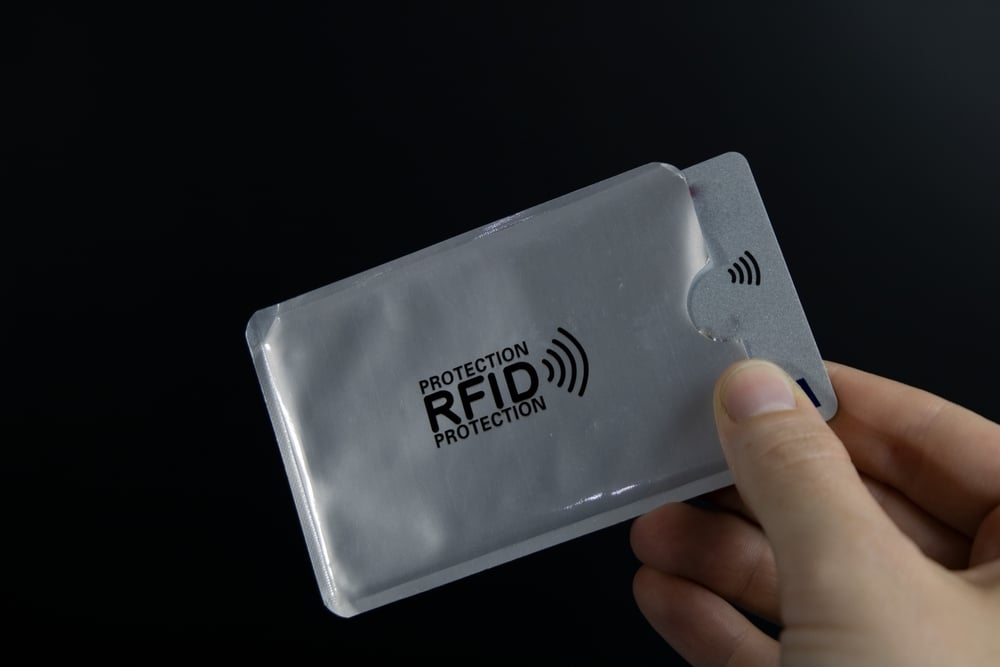.jpg?width=1600&name=Screenshot%202022-11-18%20at%2013-34-40-png%20(1).jpg)
Globally, electric vehicle (EV) sales have accelerated considerably in the past few years. As a result, the demand for charging infrastructure – both at home and in public locations – has expanded drastically. Still, charging an EV is a new experience for many and can be confusing.
For instance, knowing if and how to pay for EV charging is a common question many new EV drivers have. This article aims to clear up that confusion, by giving you a clear overview of the different payment options and explaining why there are so many options to begin with.
Do you have to pay to charge an electric car?
While there are certainly instances you can charge your car for free (for example at the workplace, or if a business offers it for free such as supermarket or restaurant) chances are that 9 out of 10 times you will have to pay for it.
How to pay for electric car charging: a brief summary
There are many different nuances that determine how payment for EV charging works, this can be broadly broken down into charging at home versus when charging in a public location.
How to pay for charging at home
Paying for home charging is easy – because home chargers are connected to your home’s electricity meter, the cost of the electricity used to charge your car is simply added to your monthly bill.
How to pay for public charging
Paying for public charging is a bit more complex and depends on the charge point operator or network. While you can often just pay-per-use, many networks offer memberships or subscriptions that unlock lower rates in exchange for a monthly fee. Payment often done through an app, an RFID card or fob, or even directly with a contactless credit or debit card.
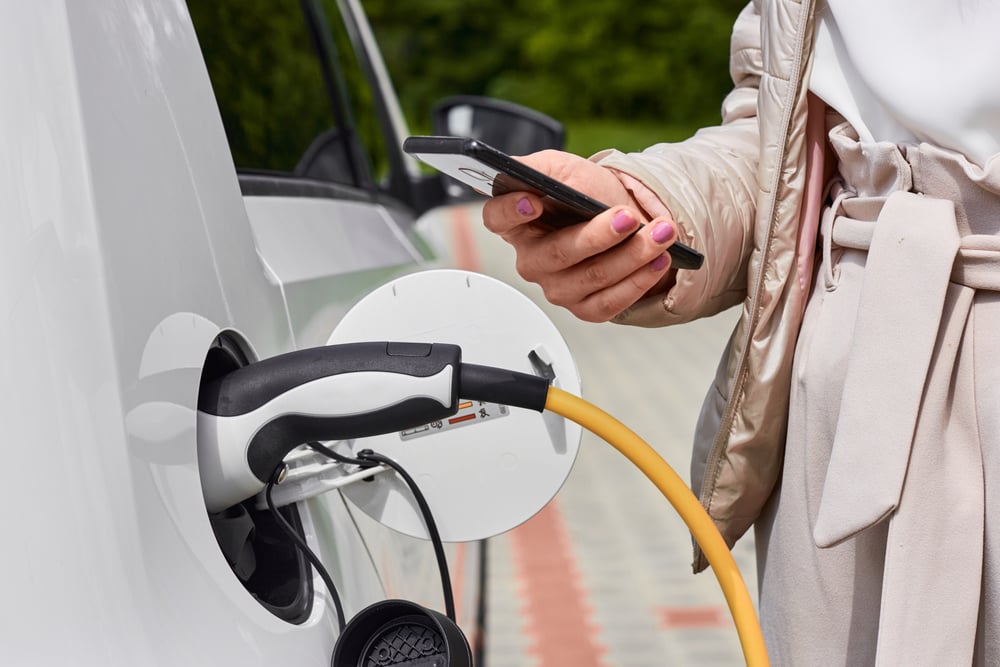
Below we will go into more detail and explain how paying for EV charging works.
How do you pay for electric car charging?
Compared to a gas-powered car, where going to a gas station is your only option for refueling, an EV offers much more flexibility in terms of when and where you decide to charge up. Because electricity is ubiquitous and available nearly everywhere, your options for charging up are diverse.
Different types of charging
Before looking at how to pay for charging, it’s important to differentiate between the different types of charging. Without getting too technical, the two ways to charge your EV are private and public charging.
Private charging, also called residential or home charging, refers to chargers installed in a location that isn’t accessible to everyone – usually the home or a private parking garage in an apartment complex.
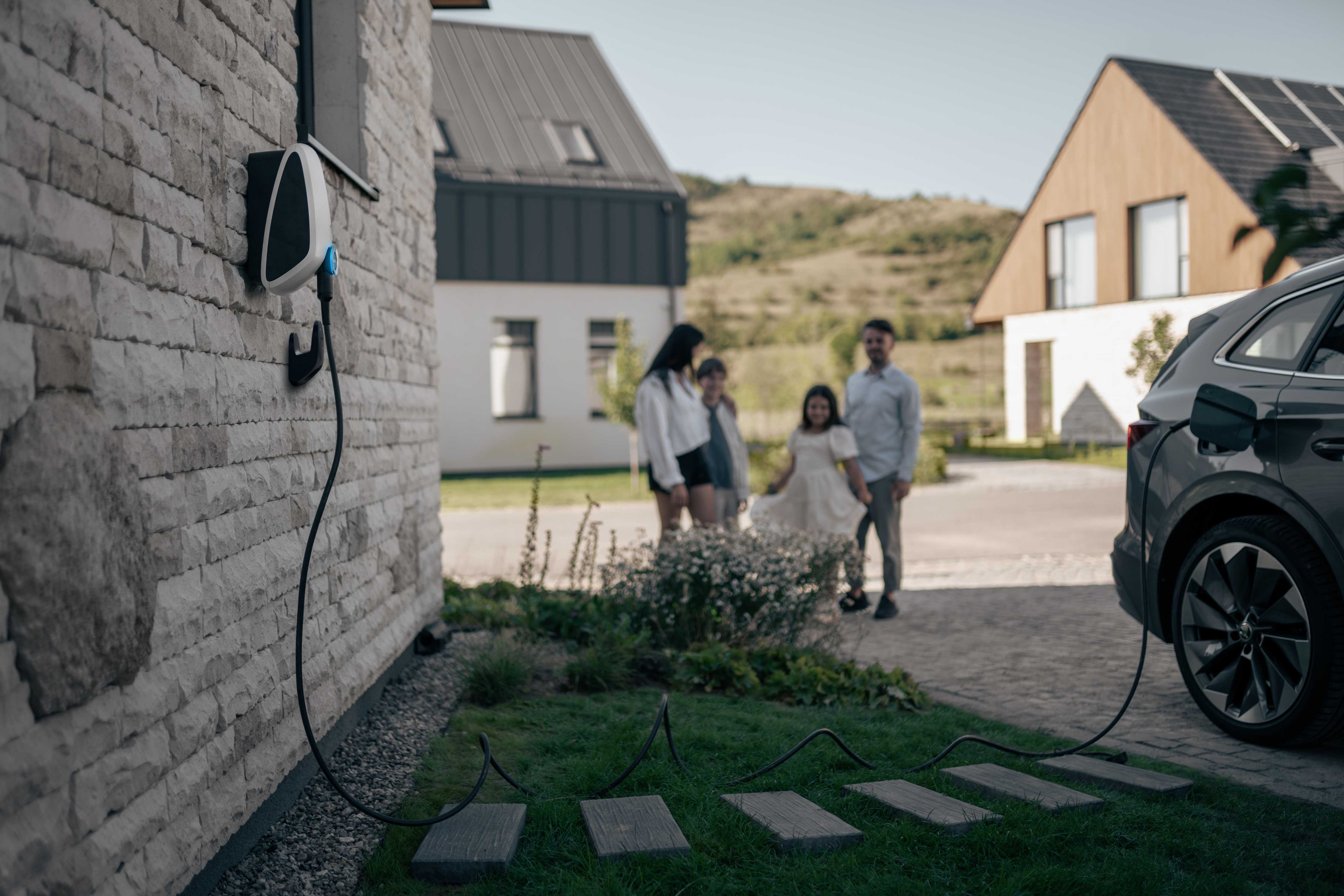
On the other hand, public chargers can be found in a range of public locations such as supermarkets, commercial parking lots, restaurants, hotels, and gas stations. They can be accessed and used by anyone, although they may require signing up or creating an account with the charge point operator.
.jpg?width=1230&height=970&name=Screenshot%202022-11-18%20at%2013-34-40-png%20(1).jpg)
How you pay for your EV charging depends on whether you use a private or public charger. We’ll explore each in detail below.
How to pay for charging your electric car at home
Paying for home charging is easy: home charging stations are wired into your electrical circuit, meaning the energy you use is tracked by your meter and added to your electricity bill.
How much home charging costs depends on various factors, such as your utility provider, electricity rates, the charger’s power output, your EV’s battery size, and your driving behavior. For a detailed breakdown of how much electricity an EV uses, have a look at our dedicated article.
Home charging is the easiest (and usually cheapest) way to charge your EV, as you don’t need any additional subscriptions or memberships and pay the standard price per kilowatt-hour (kWh) of electricity you use. Depending on your electricity tariff, you might even be able to take advantage of lower prices by charging during off-peak hours, for instance, at night.
How to pay for public charging
While public chargers come in a range of power outputs and can cost different amounts to use, paying for them is generally done in the same way.
Unlike manned gas stations, where you have the option to pay in cash at a till, charging stations will almost always require card payment or billing through an account.
The cost of charging varies on the charger’s power output – fast charging almost always costs more – but is typically made up of an initial connection fee plus the amount of electricity consumed multiplied by the network’s tariff (the price per kWh).

The key challenge in paying for a charging session has to do with the identification of the end user. Indeed, the system needs to determine who to charge for the electricity used. Therein lies the complexity of paying for public EV charging – how this authentication is done varies from charger to charger and between different networks of chargers.
Let’s explore the different ways this identification is done and break down how each works.
How you pay is connected to how you identify yourself to the charging station
Broadly, there are currently 3 main ways to authenticate yourself to a public charging station, with a new mode, plug and charge, being in development to streamline the charging experience.
For all methods except contactless card payment, you can choose between subscribing to a charging service or paying per use – while the former usually unlocks cheaper rates, paying as you go enables greater flexibility.
Charging via an app
One of the main ways to manage public charging is through a charging app. There are many different charging apps available that allow you to connect and authenticate yourself to public chargers.
Payment through a charging app can either be done through a subscription or membership, where you pay a fixed monthly fee and unlock a discounted price per kWh, or by paying per use (usually at a higher rate but with no monthly payment). Regardless of which method you use, charging costs are charged to your account and can be paid by credit or debit card or directly by bank transfer.
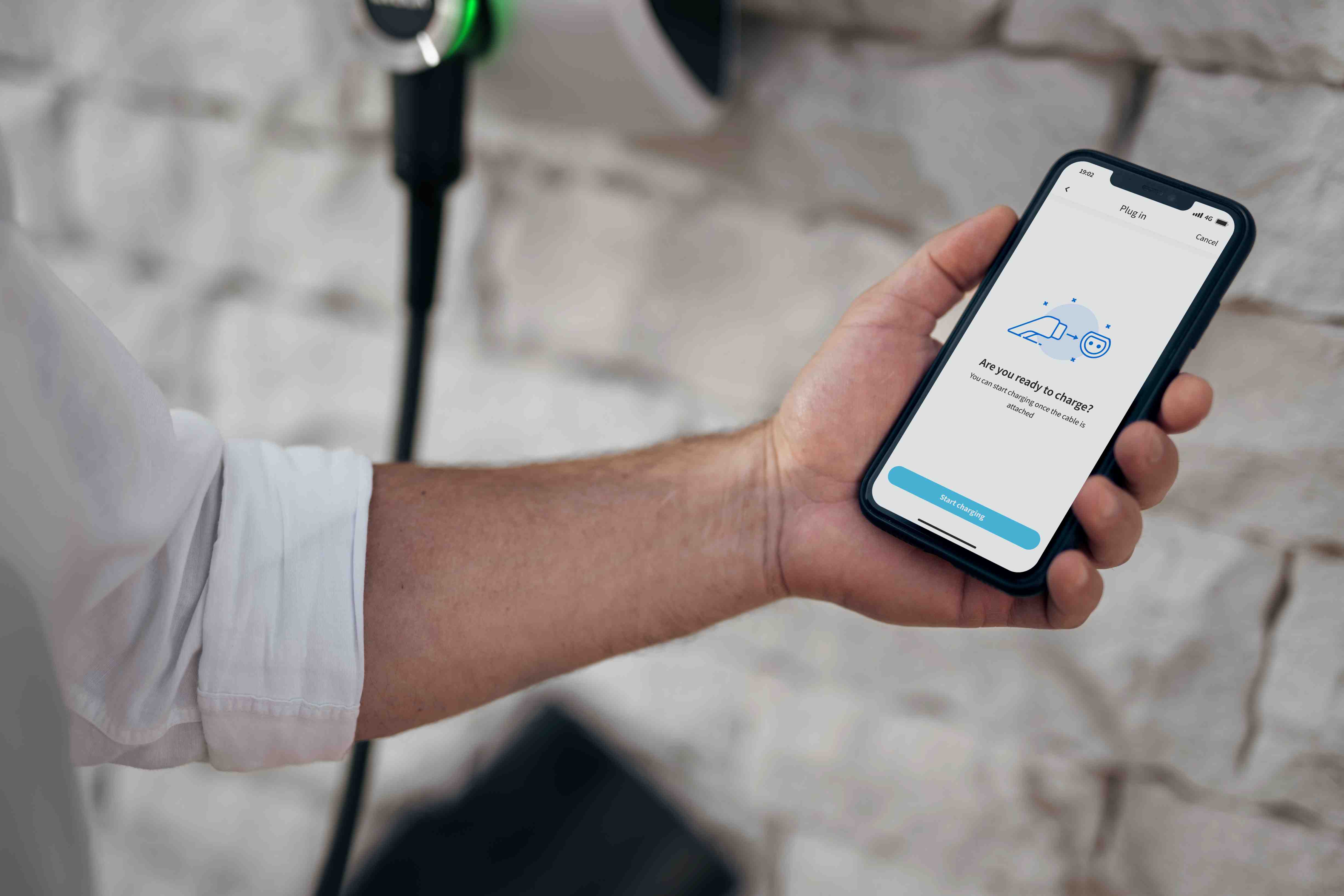
RFID card/Key fob
Another option for paying at a public charger that doesn’t involve a smartphone is through a physical RFID card or fob issued by the charge point operator, which contains your authentication information.
By swiping it on the reader, the charging station recognizes who’s using the station and knows where to send the bill. Just like a charging app, you can opt for a membership or pay as you go, depending on how frequently you charge at a public station.
Like apps, not every charging station works with the same RFID card, so if you use chargers from various networks, you may have to own and bring multiple RFID cards. While most modern chargers can also be unlocked through an app, some models require an RFID card or fob, which is worth keeping in mind when looking for a public charger.
Contactless payment/card reader
Perhaps the simplest payment option that some public chargers offer is via contactless bank card payment. This method doesn’t require any memberships or subscriptions; instead, anyone can pay and begin a charging session by swiping their credit or debit card.
While this is definitely the most flexible method to pay for charging, it also tends to be the most expensive in the long run. Not only are you likely to pay a higher price per kilowatt by paying contactless, but you’re also not able to benefit from any memberships or discounts that might be available.
How to pay for public charging in the future?
Whichever your preferred payment option, one thing is clear: paying for public EV charging can be a complicated, confusing endeavor with different and often conflicting processes depending on the operator. So, is there a way this can be standardized?
Luckily, such an approach is already in development as an ISO standard, referred to as “plug and charge”.

Plug and charge
Plug and charge, or in its full name, “Road vehicles – Vehicle to Grid communication interface,” is an international standard that bears ISO number 15118. Ironically, despite sounding potentially more confusing than all the different existing payment methods, this standard is poised to considerably simplify the entire public charging process.
As the name plug and charge suggests, the idea behind this standard is to eliminate the manual authentication required when plugging into a public charging station. Instead, authentication data will be stored in your vehicle and automatically communicated to a charger when plugged in.
As such, the charger can determine who to bill without user input, meaning that the charging experience is streamlined by simply plugging in.
Upcoming government legislation to protect consumers
Electric vehicles, and EV charging in general, are still relatively new features of the mobility sector in most countries. As such, there is a lot of legislation and standardization still to be established to ensure consumers are protected and their interests prioritized.
Many countries are starting to bring in such legislation. For example, the US is working towards the National Electric Vehicle Infrastructure (NEVI) program, which requires interoperability between charging providers, as well as similar payment systems, pricing information, charging speeds, and other features that will significantly improve the user experience.
On the other side of the Atlantic, Europe’s “Fit for 55” proposals include legislation that aims to improve the user experience and strives for fair, open, and accessible charging infrastructure under the Alternative Fuels Infrastructure Regulation (AFIR).

EV Roaming
While interoperability and compatibility between charging networks within a country are important, ensuring EVs can be charged across borders is an often overlooked consideration. This is where roaming comes in.
This may sound complicated, but we’ve got an example to help clarify.
EV charging roaming is much like roaming on your phone, this allows you to connect to a foreign country’s network and use data and phone calls like you would usually do. Back in 2017, the EU came up with new regulation which they dubbed the "Roam Like at Home" regulation. This law made it possible for all European consumers to call, text, and use mobile data at no extra cost wherever they are within the EU.
Roaming in the context of EV charging will ensure drivers they can use and connect to public chargers outside of their home country. But there’s more to roaming than just charging cross-border.
With roaming, drivers can charge at stations that belong to any other CPO networks with a single subscription. This means no more different charging cards or app subscriptions.
So this enables drivers to charge at any publicly accessible charging point, without having to worry about extra fees or being forced to take up a contract with the provider managing that charging point.
Instead of paying at the machine, the driver would simply continue to pay for charging as they do at home: with their service provider or charging subscription.
The difference between the roaming and ad hoc payment option by adding a credit card reader is essentially the same as the difference between adapting an old-fashioned payphone to accept a credit card or utilizing the digital connectivity of a smartphone today.

Paying for EV charging can be a daunting, complex experience, especially for new EV drivers. Unfortunately, there is no one method that EV drivers can always rely on, as different networks, operators, and countries use different methods – whether through an app, using an RFID card or fob, or simply by credit or debit card.
However, as the EV market matures, new legislation and standards mean that today’s disparate charging landscape will soon be a feature of the past. For instance, plug and charge is poised to bring new levels of transparency, interoperability, and user-friendliness to the charging experience.
To read more about what new regulations in Europe mean for EV drivers, have a look at our dedicated blog. Alternatively, if you’d like to learn more about public EV charging, have a look at our article on using a public charger.
Related articles

Smart Charging for Solar EV Systems: What is possible today?
There are a variety of smart solutions available, capable of optimizing your solar EV charging system in different...

Can solar EV charging save you money?
Charging your EV using household solar panels can indeed save you money on your utility bills. How much money solar EV...
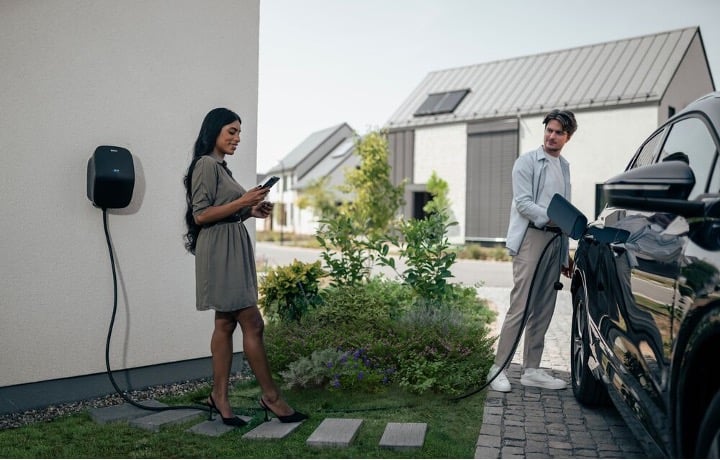
How to optimize your solar set-up for charging electric cars at home
There are several ways EV drivers can optimize a homegrown solar system to ensure their EV recharging needs are met....
